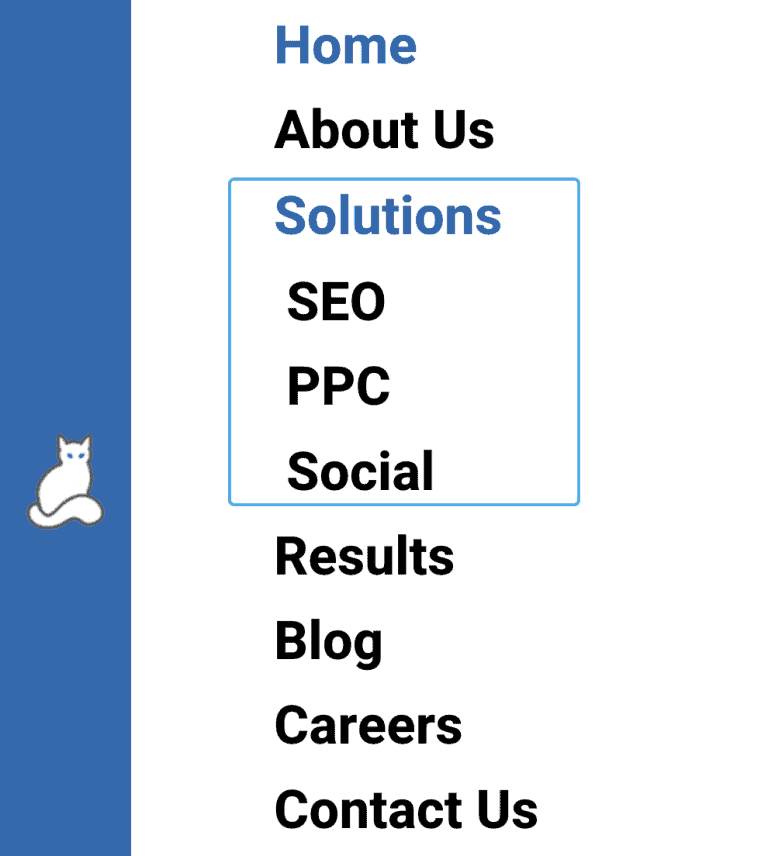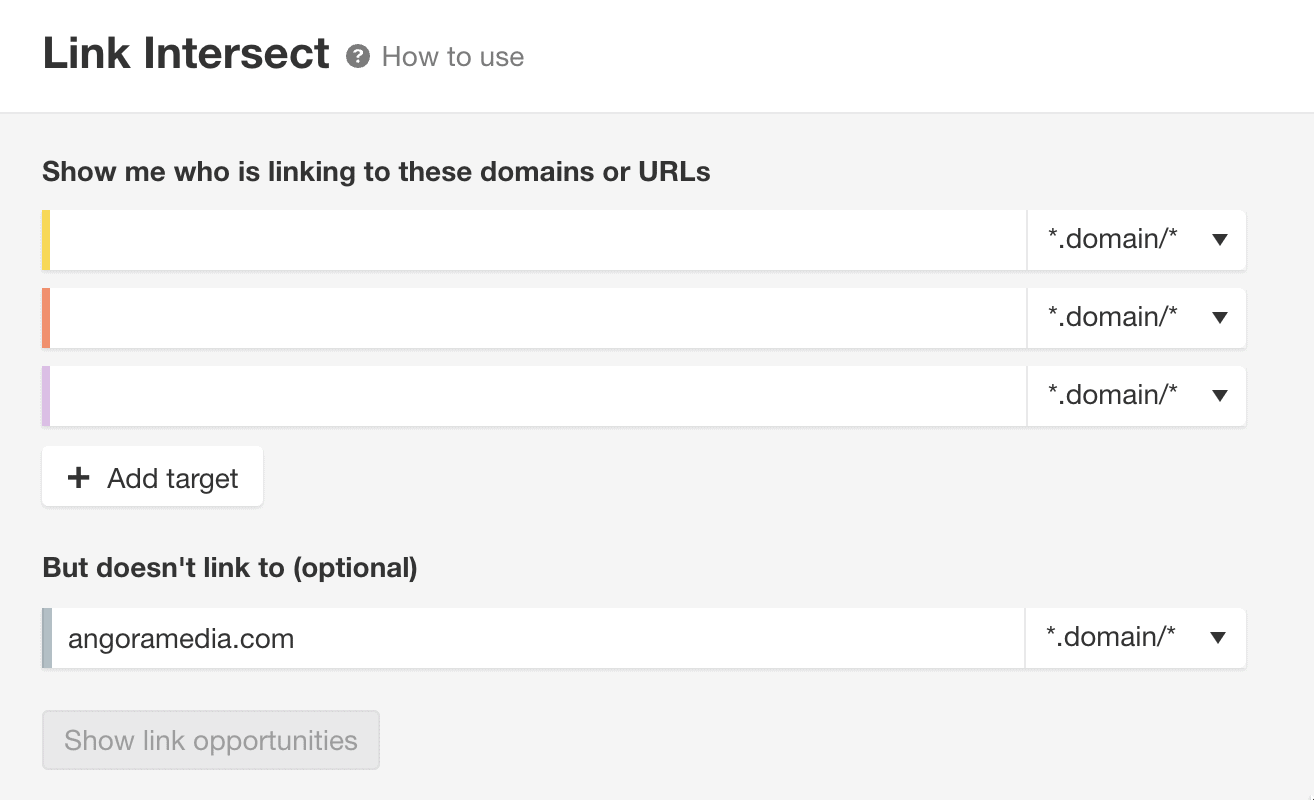SEO may be a relatively ‘new concept’, but it has massively evolved over the years.
Here is the oldest joke in the SEO book of jokes:
How many SEO experts does it take to change a light bulb, lightbulb, bulb, light, lamp, lighting?
But this is, weirdly enough, what SEO used to be all about.
SEO has come a long way since then. You no longer have to worry about keyword stuffing, keyword variants, and cloaking for engines. These are a thing of the past, and if you try and do any of these SEO ‘tactics’ today, your website will likely be penalized.
SEO is a combination of strategy and luck. But mostly strategy (if you know what actually works).
Here are 9 SEO strategies that actually work. And by that, I mean we use these strategies on a very regular basis for our clients. So, we can certainly vouch for them.
- Create Unique Pages For Each Service And/Or Solution
- Find Your Competitors On Semrush
- Use Link Intersect On Ahrefs To Add In Your Competitors
- Internal Link Building Opportunities
- Check Your Rankings After Each Update
- Carry Out A Full Site Scan Every Quarter
- Create A Content Strategy That You Can Stick To
- Create An FAQ Content Strategy According To Impressions
- Have A Company Named After A Cat Deal With Everything SEO-Related
1. Create Unique Pages For Each Service And/Or Solution
Your business may offer 1 service, it may offer 10. Each of these services will be a core keyword that you are trying to rank for on Google.
Each of these services needs a unique page, that explains how this exact service works, and that contains your keyword in 3 core areas:
- Meta title
- Meta description
- Heading
Take Angora Media, a Digital Marketing agency. We offer 3 unique services: SEO, PPC, and Social Media. So, we have 3 unique pages for each service. These pages also contain the keyword in the meta title and meta description and H1.

See for example the SEO page:

Here are some tips when creating your service or solution pages:
- Make sure your keyword is in the meta title, meta description, H1, and URL.
- Add in the keyword in the text ONLY where it sounds natural
- Avoid keyword stuffing
- Link to the service/solution page from your homepage
2. Find Your Competitors On Semrush
Your main competitors aren’t necessarily who you think they are.
Finding your main organic competitors is essential. Once you have established your main competitors, you can use their websites to compare traffic, DRs, backlinks and so much more.
Find your competitors on Semrush by simply scrolling down till you see ‘main organic competitors’.

3. Use Link Intersect On Ahrefs To Add In Your Competitors
Once you have found your main competitors, and visually flicked through their websites, there are some more concrete ways to overtake them when it comes to backlinks.
Getting links is all fun and games until you realize that there are a ton of links out there, for all different prices and you aren’t even sure if it will boost your website.
Here is one way to ensure that the links you get are 100% relevant to your SEO strategy:
On Ahrefs, click on ‘Link opportunities’. Add in your competitor websites and your own domain.
This will show you which external websites are linking to your competitors, but which don’t link to your website.
You can even see the DR of each website, and which exact websites are being linked to. Choose the website which links the majority of your competitors (this will depend on how many competitors you inserted in the first place, but at least 50% is a good start).
Then, you can approach this website to write a guest post / buy a backlink.
Your competitors may be stronger than you, they may be weaker than you. But, don’t let them have their cake and eat it. Sometimes, taking a small (or big) slice of the cake for yourself is completely allowed (and encouraged!).

4. Internal Link Building Opportunities
All too often, SEO focuses on external competitors and forgets that you are actually able to strengthen your website from the inside-out.
Think of your website as a cake. And not just any regular cake, but a crepe cake. A crepe cake requires many thin layers of crepes to be evenly spread on top of one another, and only once they are all pieced together perfectly does the cake form. If one crepe is too thick or isn’t placed evenly on top of the others, this will cause the cake to be unbalanced.
If you’re hungry for cake (or crepes) now, you aren’t alone. Take a cake break and come back when you’re ready!
Similarly, your website is made up of multiple pages that only when pieced together evenly, will resemble a website. If your website isn’t balanced when it comes to internal links, it doesn’t matter how many backlinks you have, your website won’t be well-balanced.
Here is one way to make sure that your website has a strong internal-linking strategy:
- Find your keywords (usually each solution/service page is a keyword but you may have others)
- Use tools such as Google Search Console, Screaming Frog, or Semrush to find all pages that contain these keywords (Screaming Frog is the best way to find this – as you can specifically search for pages that have no anchors surrounding this keyword).
Compile all the pages into a spreadsheet according to keyword, and add in links to the service page surrounding this keyword - Make sure you don’t repeat links – only 1 of each link per page
That’s it. Just 3 simple steps.
5. Check Your Rankings After Each Update
Google likes to play a little game with us. Every few months, there is a Google update that shakes up website rankings and positions.
If you wake up one day and your rankings are all over the place, don’t panic. There may have been an update overnight.
First, check Twitter to see if the update did happen. You will find that your website isn’t the only one that got shaken about.
Next, check on your competitors. How did they fair? If they are in a stronger position to you, check why.
It may be as simple as needing to add more internal links, or updating your Alt Texts. But, it is important to Google so it’s automatically important to you.
6. Carry Out A Full Site Scan Every Quarter
At least 4 times a year you should do a full scan of your website to search for any technical errors.
Technical errors may seem like a cat-and-mouse race, but there is always something to fix. Keeping on top of your audits will keep you ahead of the game.
You may carry out full-website scans more than 4 times a year if there are errors that come up. But at a minimum, 4 times a year a full audit should be carried out.
Implementing all the solutions to errors may seem painful, and time-consuming, but it is completely worth it, trust us.
7. Create A Content Strategy That You Can Stick To
Content is the way forward once you have tackled your technical SEO problems. Creating a blog and content strategy that you can actually stick to is essential.
Begin by finding your keywords, target audience, and competitors. All of these should already be known if you are already knee-deep into your SEO strategy.
Then, create your flow, set deadlines, guidelines, and your brief – ALWAYS plan your content before writing it.
Even this blog post had a brief written before I started writing it (albeit it’s a more informal brief than one I would normally send to clients).
Having a content calendar is a useful way to keep on track of what pieces of content are written, published, or in progress.
Don’t forget to track and optimize previous pieces of content to keep them relevant and up to date!
8. Create An FAQ Content Strategy According To Impressions
If you have a lot of content on your website that isn’t ranking as well as you hoped, or it was ranking well but now has dropped and you aren’t sure how to raise the rankings, then an FAQ schema may be the answer you are searching for.
Simply go onto Google Search Console and search for the blog pages that you want to optimize. See which ‘Queries’ have high impressions, but low click rates.
Then, create a minimum of 3 FAQs that include these keywords in the question and answer.
Insert this text into the bottom of your blog page alongside an FAQ schema. Your traffic should jump almost instantly.
9. Have A Company Named After A Cat Deal With Everything SEO-Related
Subtle? I wasn’t trying to be.
But seriously, if this sounds daunting, or SEO sounds cool but ‘who has time for that?’, then a digital marketing agency is exactly what you need.
And yes, an Angora is a cat – read about why we are named after a cat in a dog-dominated world here – and we are a digital marketing agency that specializes in SEO.
Everything written above, all tips, tricks, and secrets, are taken from our in-house SEO specialists that work daily to optimize websites from A to Z.
We obviously have more tricks up our sleeves (a magician never reveals their secrets or all of their secrets at least), and have seen success rates fly up with our audits, link building, and technical and content strategies.
Speak to us here to learn more about a customized SEO strategy that actually works for your website.







